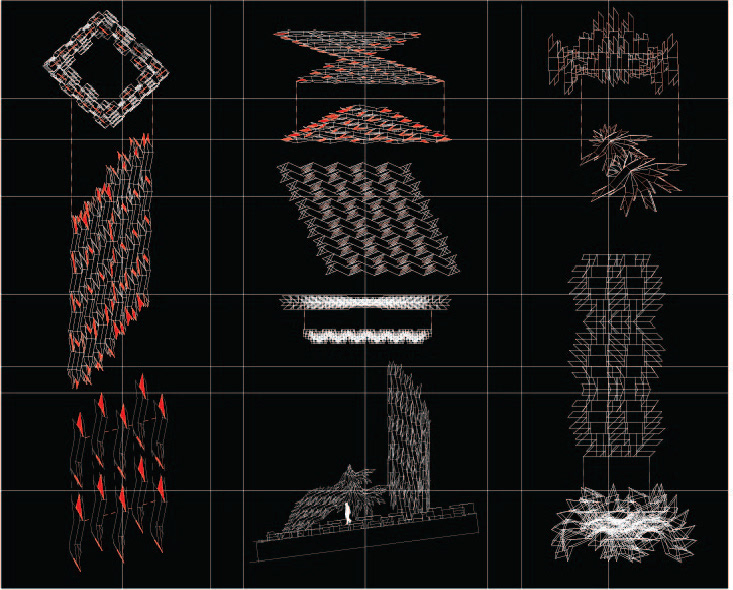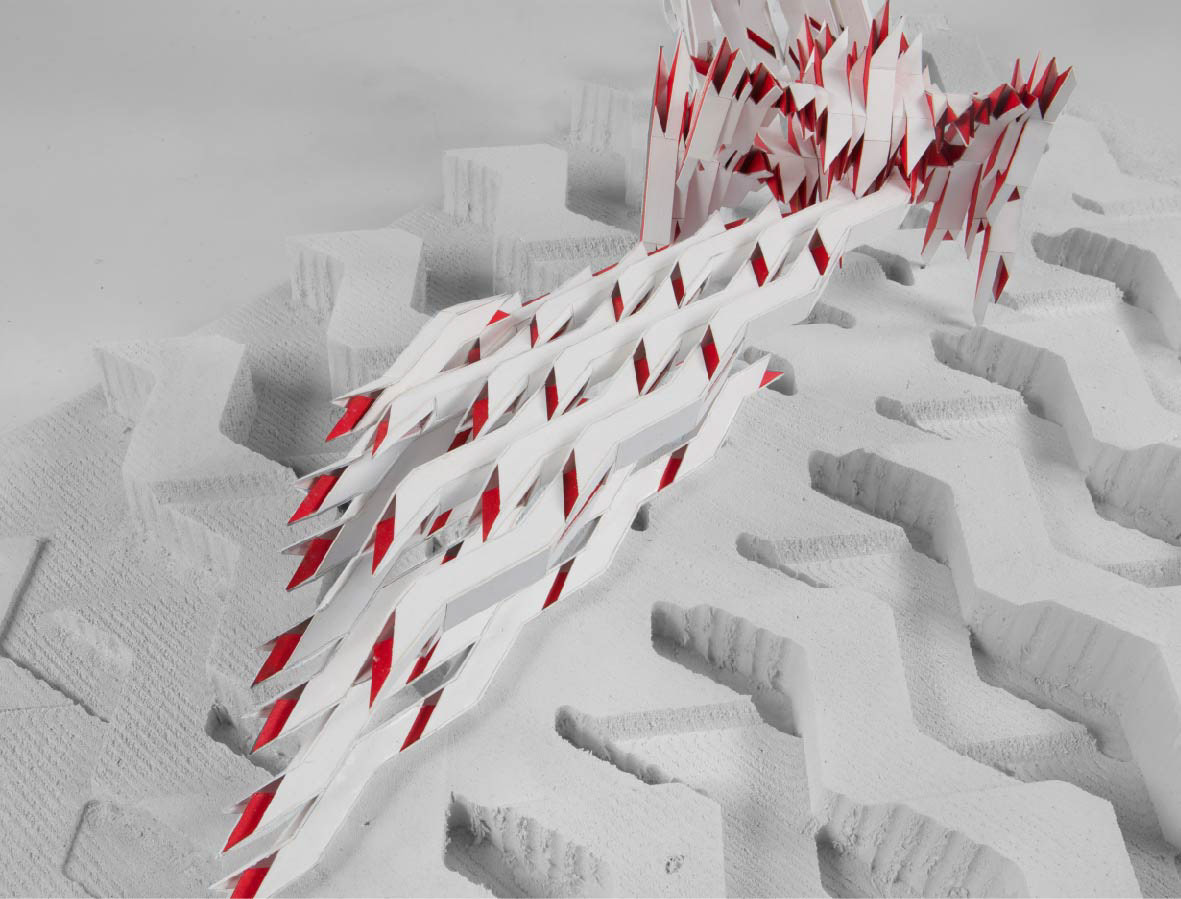The focus of this project was on the exploration of environmental, social, and mental conditions of spaces through the translation of drawings into synthetic geometries by selecting material and color for their evocative qualities to be able to transform the very perception of space.
The vision of the social contract between the community members was based on the general view that this proposed society creates a network of neighborhoods that become interwoven and connected together through a network of familial joinery and ground.
The tall structure dominates the other two pavilions and is meant to convey a prominent, axial visual impact on the horizon to show the strength of the community as a sort of map or symbolic gesture that marks the paramount of the passage between Troy and the RPI campus. The spiraling structure peels off the vertical passage responding as a reaction to the vertical thrust of the tall structure. The roof-scape of the horizontal space is punctuated by light wells and voids that enhance, control, and vary daylight percolating into the space. The third space pierces into the spiraling structure and acts as an entryway that funnels inhabitants from the common path into the structure itself.
These fields of connections that were developed to create systems of enclosures developed an architectural language of impermanence and permeable screens that compliment and contribute to the nature of this restless landscape. This is an intended place for public gathering that offers inhabitants the opportunity to rest, relax, and be positively influenced by different ideas, backgrounds, and the general surrounding.
The vision of the social contract between the community members was based on the general view that this proposed society creates a network of neighborhoods that become interwoven and connected together through a network of familial joinery and ground.
The tall structure dominates the other two pavilions and is meant to convey a prominent, axial visual impact on the horizon to show the strength of the community as a sort of map or symbolic gesture that marks the paramount of the passage between Troy and the RPI campus. The spiraling structure peels off the vertical passage responding as a reaction to the vertical thrust of the tall structure. The roof-scape of the horizontal space is punctuated by light wells and voids that enhance, control, and vary daylight percolating into the space. The third space pierces into the spiraling structure and acts as an entryway that funnels inhabitants from the common path into the structure itself.
These fields of connections that were developed to create systems of enclosures developed an architectural language of impermanence and permeable screens that compliment and contribute to the nature of this restless landscape. This is an intended place for public gathering that offers inhabitants the opportunity to rest, relax, and be positively influenced by different ideas, backgrounds, and the general surrounding.



-Professor Anthony Titus


